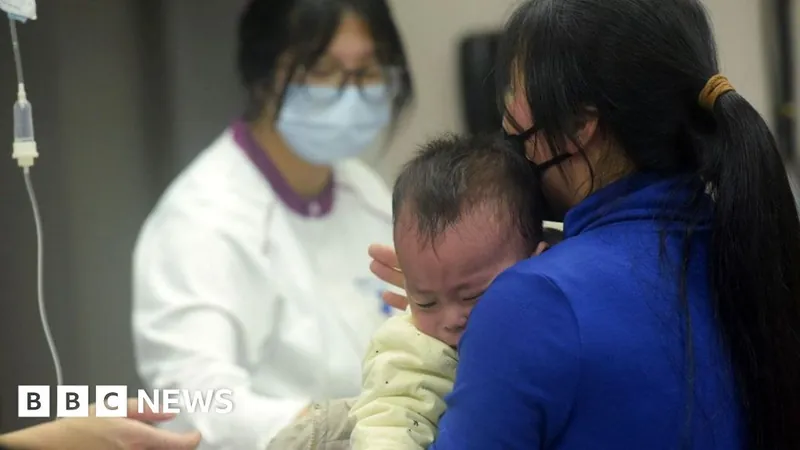
HMPV: Understanding the Rise of Human Metapneumovirus Cases in China and Beyond
2025-01-11
Author: Ying
A recent surge in human metapneumovirus (HMPV) cases in China has sparked concerns reminiscent of the COVID-19 pandemic. Reports and alarming images of overwhelmed hospitals filled with masked patients have been circulating on social media platforms, fueling fears among the public. However, health experts hasten to clarify that HMPV, unlike COVID-19, is not a newcomer; it has been documented for over two decades and typically experiences seasonal fluctuations.
What is HMPV and How Does it Spread?
Discovered in the Netherlands in 2001, HMPV is primarily spread through direct contact between people or by touching surfaces contaminated with the virus. Generally leading to mild upper respiratory infections, HMPV symptoms closely resemble those of the flu. Common signs include cough, fever, and nasal congestion.
The most vulnerable populations include young children under the age of two and individuals with compromised immune systems—such as the elderly and those undergoing treatment for severe illnesses like cancer. According to Dr. Hsu Li Yang, an infectious diseases expert in Singapore, while most individuals will recover without complications, a "small but significant proportion” of the immunocompromised can experience severe respiratory issues, requiring hospitalization, and potentially facing life-threatening outcomes.
The Seasonal Spike in HMPV Cases
Health authorities note that HMPV tends to peak during late winter and spring. The virus thrives in colder conditions, making it easier to spread as individuals congregate indoors in poorly ventilated spaces. Currently, northern China is grappling with a pronounced spike in HMPV cases, coinciding with notably low temperatures—conditions expected to persist until March. Other nations in the northern hemisphere, including the United States, are similarly witnessing increased cases.
Epidemiologist Jacqueline Stephens from Flinders University in Australia emphasizes that while the uptick in cases is concerning, it aligns with the usual seasonal rise typically observed during winter months. The World Health Organization (WHO) is actively monitoring flu-like illnesses across the Northern Hemisphere and assures that it has yet to identify any unusual outbreak trends in China or elsewhere.
Is HMPV Spreading in the UK?
The UK has experienced a gradual increase in HMPV cases since October 2024. While the UK Health and Security Agency (UKHSA) does not specify total case counts publicly, data indicates that the percentage of positive tests for HMPV markedly increased in mid-December, sustaining at elevated levels subsequently. Remarkably, the UKHSA reassures that the current level of HMPV is consistent with expected seasonal trends, with no unusual pressures on healthcare services being reported.
Conclusion: Should We Fear a Pandemic?
At this point, experts assert that a repeat of the COVID-19 pandemic due to HMPV seems unlikely. The consistent monitoring done by health organizations worldwide suggests that the virus is acting within predictable patterns, and healthcare systems are managing the situation without the need for emergency declarations. As communities navigate this winter season, public health officials emphasize the importance of awareness and routine preventative measures to mitigate the spread of respiratory infections like HMPV.
Stay informed and prepared, because understanding HMPV is crucial for protecting your health this season!

 Brasil (PT)
Brasil (PT)
 Canada (EN)
Canada (EN)
 Chile (ES)
Chile (ES)
 Česko (CS)
Česko (CS)
 대한민국 (KO)
대한민국 (KO)
 España (ES)
España (ES)
 France (FR)
France (FR)
 Hong Kong (EN)
Hong Kong (EN)
 Italia (IT)
Italia (IT)
 日本 (JA)
日本 (JA)
 Magyarország (HU)
Magyarország (HU)
 Norge (NO)
Norge (NO)
 Polska (PL)
Polska (PL)
 Schweiz (DE)
Schweiz (DE)
 Singapore (EN)
Singapore (EN)
 Sverige (SV)
Sverige (SV)
 Suomi (FI)
Suomi (FI)
 Türkiye (TR)
Türkiye (TR)
 الإمارات العربية المتحدة (AR)
الإمارات العربية المتحدة (AR)